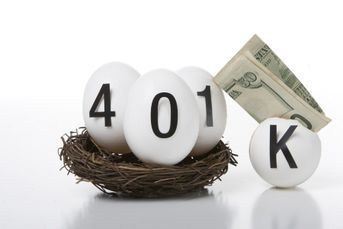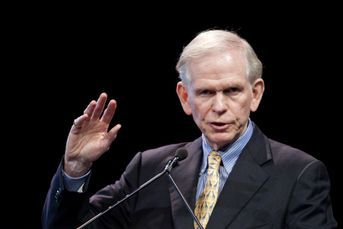Emerging markets bloodbath highlights up-and-comer ETFs
$10 billion has flowed out of emerging markets, but here are some ETFs that have taken in money
Nearly $20 billion has flowed out of emerging-market exchange-traded funds in the last 13 months ($10 billion in just the past six weeks). But a handful of ETFs focused on these volatile markets have taken in about $6.5 billion.
These ETFs avoided outflows in large part because they weren’t favorites of the “hot money” jumping in and out of markets in search of short-term returns. ETF giants iShares MSCI Emerging Markets (EEM; $30.8 billion) and Vanguard FTSE Emerging Markets (VWO; $40 billion) provided two favorite ways for speculative investors to place bets; those funds account for over 80% of the money leaving the sector. The smaller emerging-market ETFs that gained assets did so because they’re attractive to long-term investors looking for innovative ways to get exposure to developing markets.
That’s not to say these ETFs aren’t risky — just about all emerging-market investing is.
Here’s a look at five up-and-comers, in order of inflows:
1. iShares Core MSCI Emerging Markets ETF (IEMG)
This emerging-market ETF saw the greatest influx of money by far during the past 13 months, gaining $3.4 billion in assets. When the turmoil started it was two months old, with $260 million, so the vast bulk of its assets came in during that period.
IEMG is gaining assets because it’s simply a better version of its older sib, the iShares MSCI Emerging Markets ETF. Its country and sector allocations are similar to EEM’s, and it also tracks an MSCI index. It is different in a few ways. It is cheaper, charging a fee of .18% of assets on an annual basis, versus .67% for EEM. It is broader, with more than double the number of securities, 1,745 versus 822. And it has 15% exposure to small-cap stocks; EEM has 2%. IEMG trades over 1 million shares a day. That’s tiny next to the 85.3 million shares EEM trades a day, but both it and EEM have narrow bid-ask spreads, meaning that the gaps between the prices at which you can sell or buy them are very small.
2. iShares MSCI Emerging Markets Minimum Volatility ETF (EEMV)
EEMV has taken in $1.5 billion during the past 13 months, doubling its size to $2.1 billion. If IEMG is a better version of EEM, then EEMV is a less volatile version of that mega-fund. This ETF keeps its exposure to countries and different sectors within set ranges, which keeps its allocations fairly similar to EEM’s. To damp volatility, it creates a portfolio of stocks that offset each other. It is significantly less volatile than EEM, and over two years has a total return of 4.6% to EEM’s 5.7% loss. That lead collapsed in the last six months, with EEM losing 1.2% in value and EEMV falling 4.7%. EEMV has higher portfolio weights in telecom and Indonesia than EEM does, and both areas have been hit hard.
3. WisdomTree Emerging Markets SmallCap Dividend Fund (DGS)
The $675 million that has flowed into DGS for the past year or so has lifted its assets to $1.7 billion. It holds 570 small-cap stocks across the emerging markets and weights them based on their dividends. That dividend focus is how DGS lowers the volatility of the portfolio. It has slightly less volatility than EEM — something you wouldn’t expect, since EEM focuses on large-cap stocks, which tend to be more stable than small-caps. This ETF is essentially a “beyond BRICs” portfolio; it invests a large chunk of its assets outside the countries long considered the primary emerging markets for investors — Brazil, Russia, India and China. Some 77% of its country exposure is in Taiwan, South Korea, Malaysia, South Africa and Thailand. It has 30% in consumer stocks. That’s a play on the potential growth in emerging economies from domestic demand rather than from exports. DGS charges a fee of .63%.
4. EGShares Emerging Markets Consumer ETF (ECON)
A new entrant in the $1 billion club, ECON attracted $556 million in the past 13 months. Unlike IEMG and DGS, which take more of a shotgun approach to investing, ECON’s strategy is more like a rifle shot. It invests only in consumer stocks and holds just 30 of them. Ten of those make up 50% of the portfolio. This has worked out well lately, and ECON has bested EEM over three years, with a 16% return to EEM’s 11% loss. Its expense ratio is rich at .85%, which investors seem to be overlooking for now given its performance.
5. iShares MSCI Frontier 100 ETF (FM)
This isn’t technically an emerging-market ETF, because it tracks frontier, or pre-emerging market, countries. It invests in a wide variety of these markets in various stages of development.
Like the emerging markets a decade ago, frontier markets don’t move in lockstep with the U.S. markets — a rare quality these days. Some $431 million has flowed into FM over the past 13 months. Kuwait, Qatar, the United Arab Emirates, Nigeria and Pakistan make up the ETF’s top country holdings. It has over 60% of its holdings in the Middle East, which helps explain why it has outperformed emerging markets by 35% over the past year. The Middle East has been one of the hottest regions; the UAE has led the way with an 87% 1-year return. That return accounted for 8% of FM’s total return over that period.
FM will lose its stakes in Qatar and United Arab Emirates in May. That’s when MSCI will give the countries emerging-market status and move them into emerging-market indexes. So the ETF’s exposure to countries like Nigeria — where Mark Mobius, chairman of Templeton Emerging Markets Group, is placing big bets — will rise. Other countries that will carry more weight in the fund after the change will be Kuwait, Pakistan and Argentina. It’s an adventurous investing itinerary, but that’s what frontier markets are all about.
(Bloomberg News)
Learn more about reprints and licensing for this article.








